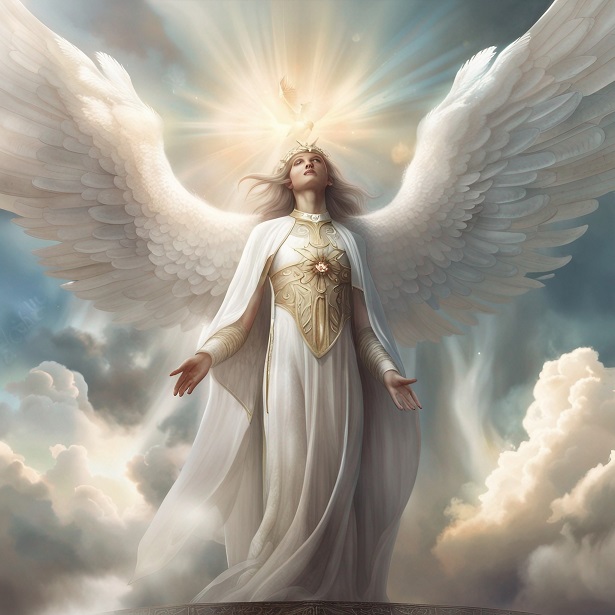
Biblical Angels and Spiritual Beings
The Bible presents spiritual beings - both luminous and shadowed - as central figures in divine storytelling. Far from simply decorative, they shape destinies, embody cosmic realities, and invite us into awe and contemplation.
Good Spiritual Beings
Angels
Nature: Emissaries of the divine, guardians, and warriors.
Appearance: Often human-like - with wings, radiance, or brilliant garments - symbols of heavenly authority and purity.
Role/Behavior: They deliver crucial messages, protect the faithful, and carry out God's justice and compassion.
Example Scriptures: Gabriel greeting Mary and Zechariah (Luke 1:11-20, 26-38) , and Michael, a warrior angel, in spiritual warfare. (Daniel 10:13, 21; Jude 1:9; Revelation 12:7-9)
Note: Angels often intervene at pivotal moments - ushering in revelation, comfort, or divine victory.
Seraphim
Nature: Celestial beings nearest God's throne, often viewed as the highest order of angels.
Appearance: Six-winged creatures: two covering their faces (reverence), two covering their feet (humility), and two for flight (mobility).
Scripture: Found in Isaiah's vision: Holy, holy, holy is the LORD of hosts... (Isaiah 6:1-7)
Insight: Their presence centers on worship - an endless echo of divine holiness that invites our hearts to worship, too.
Cherubim
Nature: Guardians of sacred spaces and symbols of God's presence.
Appearance: Intricate beings with multiple wings and faces - signifying alertness, knowledge, and omnipresence.
Scripture: Appearing to guard Eden's entrance (Genesis 3:24) , adorning the Ark of the Covenant (Exodus 25:18-22) , and in Ezekiel's vivid visions (Ezekiel 10).
Insight: They embody worship and protection - God's nearness and holiness made manifest in form.
Evil Spiritual Beings
Satan (The Adversary)
Nature: A fallen angel turned spiritual opposing force.
Appearance: Biblically ambiguous - often depicted figuratively as a serpent, dragon, or accuser.
Scripture: References include Isaiah 14:12-15, Ezekiel 28:12-17 (interpreted traditionally), the temptations of Jesus (Matthew 4:1-11) , and warnings of his prowling nature (1 Peter 5:8) ; he appears as a dragon in Revelation. (Revelation 12:9; 20:2)
Insight: More than a villain, Satan symbolizes the distortion of holiness - a caution that rebellion wreaks cosmic harm.
Demons
Nature: Fallen angels or malevolent spirits under Satan's influence.
Appearance: Often formless, revealed through oppression and possession.
Scripture: Jesus casting out demons from a tormented man (Matthew 8:28-34) , the healed Gerasene demoniac. (Mark 5:1-20; Luke 8:26-39)
Insight: Representative of spiritual brokenness, they highlight Jesus's authority and compassion over darkness.
Fallen Angels
Nature: Angels who rebelled alongside Satan.
Appearance: Scripturally unspecified - thought to be hidden, yet spiritually active.
Scripture: 2 Peter 2:4 speaks of angels who sinned, Jude 1:6 mentions angels kept in darkness, and Revelation 12:7-9 depicts their cosmic defeat.
Insight: Their rebellion is a sobering reminder of free will's weight - even beings from glory can fall.
From majestic worshippers to sinister disruptors, biblical spiritual beings reveal the interplay of grace, holiness, power, and choice.